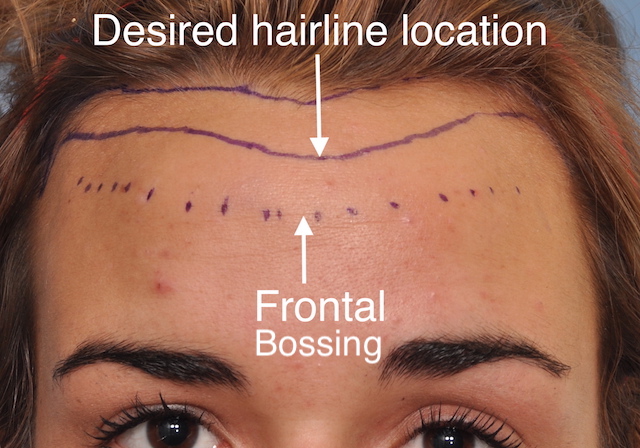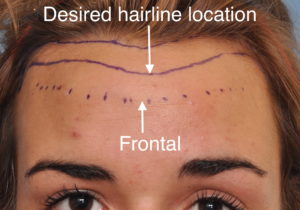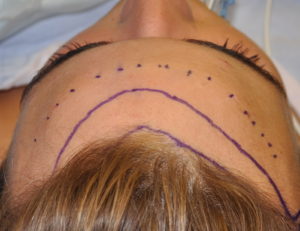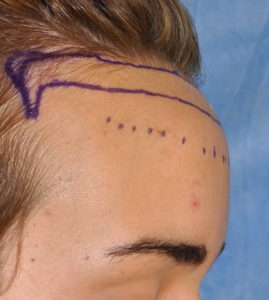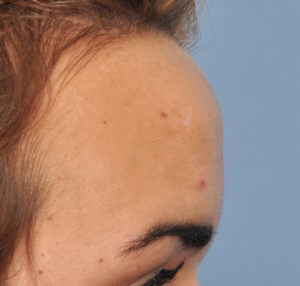Background: The well known proportions of the face are based on horizontal thirds ratios between the upper, mid- and lower face. The forehead or upper third of the face is the easiest to see and assess because it lacks any features other than the eyebrows at its inferior edge. Thus when the forehead is out of proportion it is moat always one of being too big or too vertically long.
The long or high forehead is typically one that exceeds lengths of 6.5cms or greater But the reality is that of the patient thinks the forehead length is excessive them it is. But I have yet to see a female with a long forehead that didn’t exceed this measured length.
By definition when a forehead is long it exposes more of the frontal bone surface area and shape. In some long forehead females the upper frontal bone protrudes forward rather than slopes back as it goes into the frontal hairline. This creates an unaesthetic bulge known as frontal bossing which magnifies the length of the forehead particularly in profile.
The goal of a frontal hairline advancement is not only to shorten the verbal length of the forehead but to cover or obscure the frontal bossing. Reducing the thickness of the frontal bossing reduces its appearance in profile but also enables a bit more room for the frontal hairline advancement.
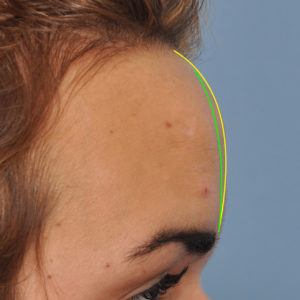
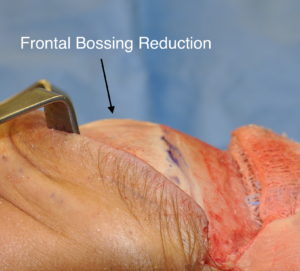
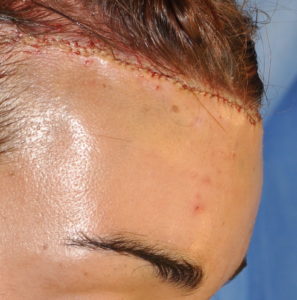
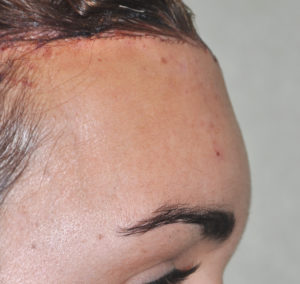
Case Highlights:
1) High foreheads can be associated with frontal bone bossing.
2) The combination of a frontal hairline advancement with upper forehead bone reduction shortens the forehead and normalizes its appearance in profile.
3) Frontal hairline advancements, even without periosteal releases of the brow bones, can have a modest brow lifting effect.
Dr. Barry Eppley
Indianapolis, Indiana

